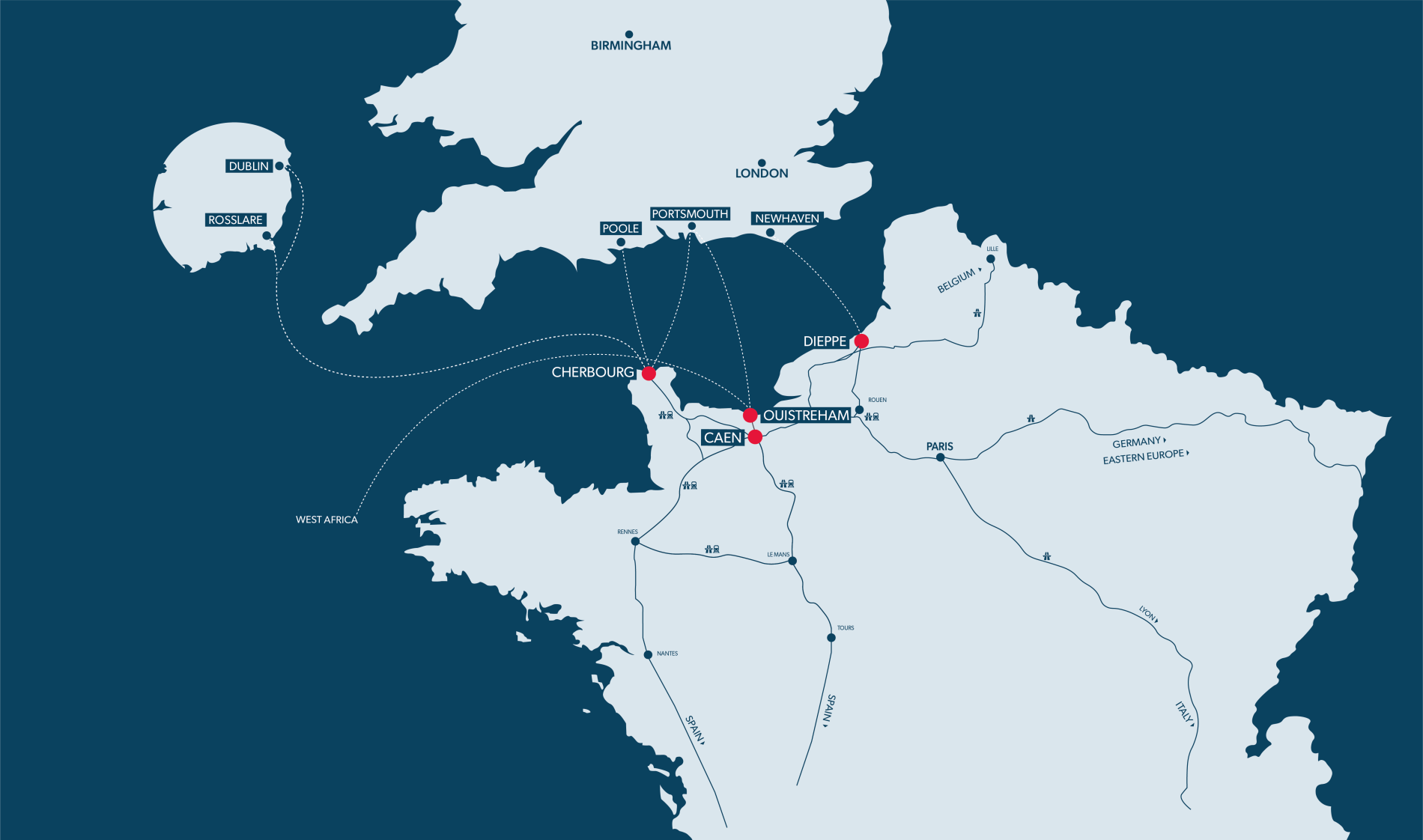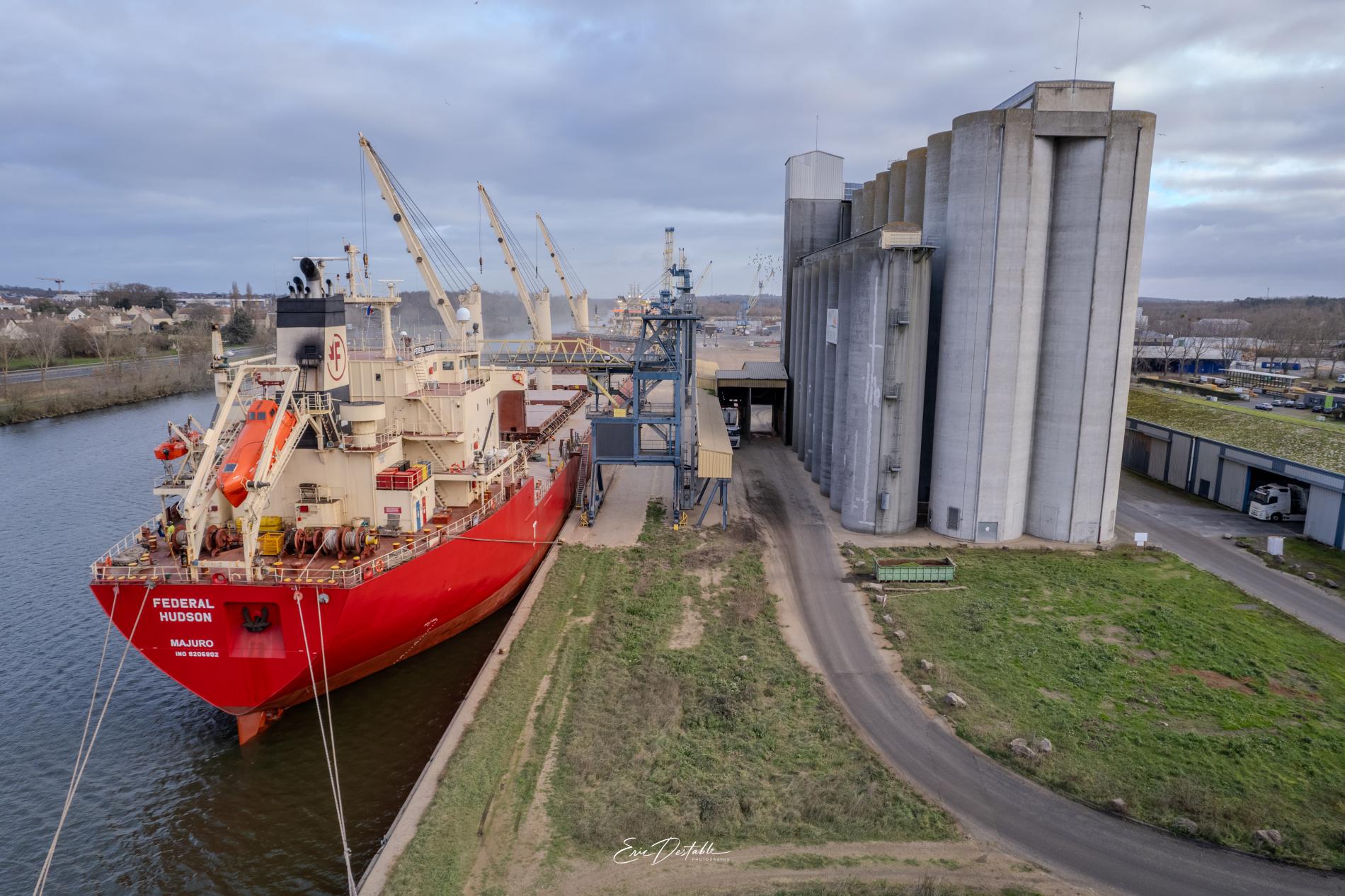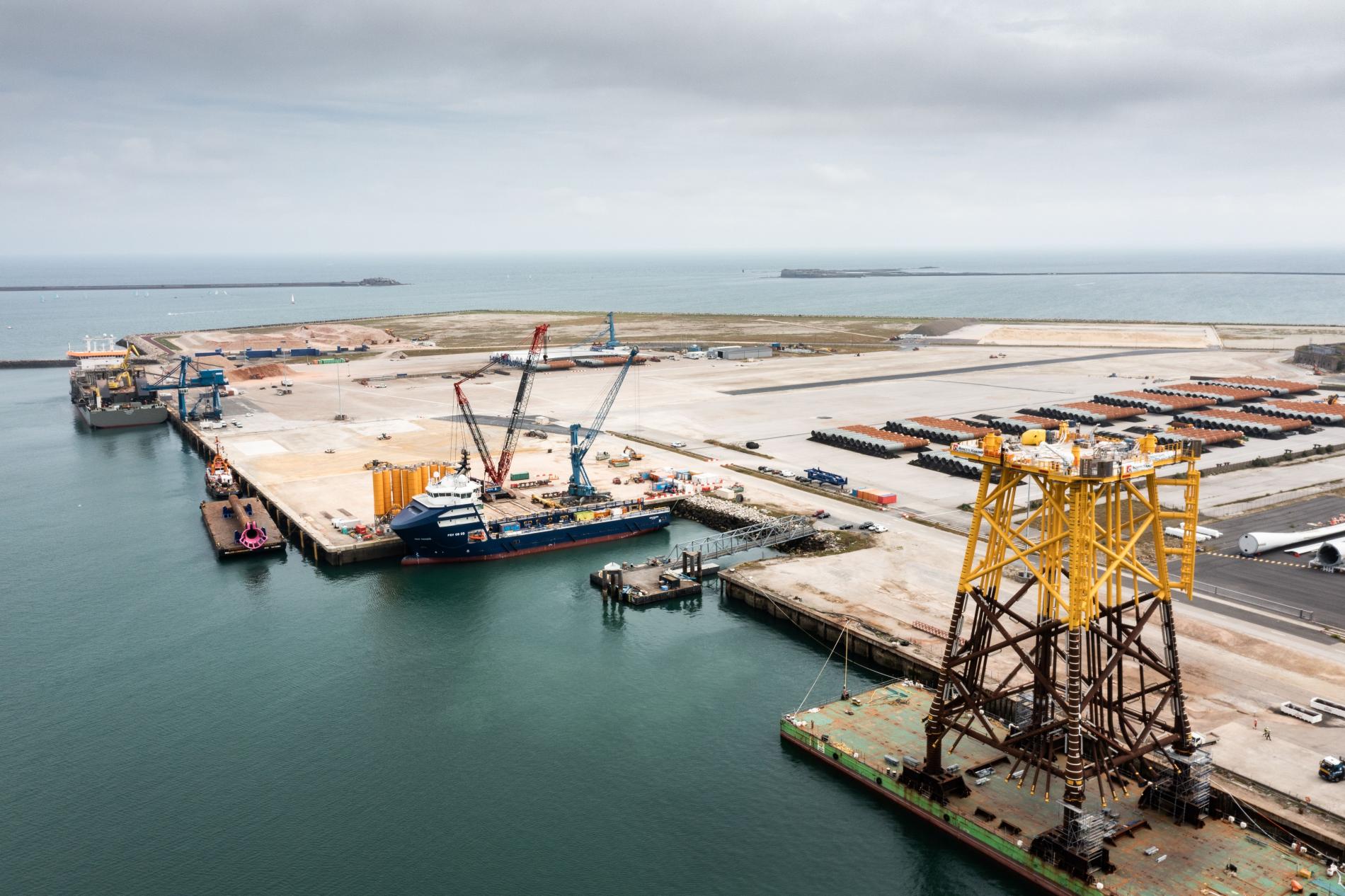Commerce EN
A highly diverse niche
Conventional trade is an important foundation of Ports of Normandy’s activity. Every year, around 1 million tonnes of extremely diverse, essentially niche cargo passes through our ports: dry bulk (quarry materials, grain, scrap metal), liquid bulk (molasses, petroleum products), heavy-lift or cumbersome units (wind turbines, transformers, boats, etc.) or hazardous goods (class 1, class 7).
To handle such traffic, we have developed highly specific expertise and a quality infrastructure: draught of up to 14 m, heavy-lift quays of up to 50 T/m², over 200 hectares of hardstanding, a wide range of facilities, over 60,000 m² of buildings, more than 20 dock cranes with a capacity of up to 120 T, silos, dryers, pipe, class 1 terminal, etc.
Ports of Normandy is also an industrial base with land reserves to accommodate new industrial sectors alongside the existing ones (automotive, agri-foods, MRE, parapetroleum, shipbuilding and others).
Caroline Popovici
Logistics Manager

Commerce in Caen-Ouistreham
Bordering a 15-km canal linking Caen to the sea, the commercial port comprises 4 terminals: New dock/Calix, Hérouville, Blainville and Ranville, handling over 500,000 T of goods per year. It is accessible via a lock open 16 hours a day, on average, enabling ships with a beam of up to 27.4 m (approximately 30,000 T) to dock at the terminals.
Port traffic focuses on the food and agri-food business (grain, fertiliser, cattle feed) while diversifying into niche areas such as the import/export of biomass, bentonite and molasses. Port traffic focuses on the food and agri-food business (grain, fertiliser, cattle feed) while diversifying into niche areas such as the import/export of biomass, bentonite and molasses.
The commercial port has a 2,000-m long quay, 164 ha of land area under concession including 30 ha with potential for development, and specific facilities including 15 ha of buildings including bulk depots, liquid terminals, grain silos, a lumber drying kiln, etc.
Commerce in Cherbourg
Accessible 24/7 with no locks to negotiate or limits in terms of draught or vertical clearance, and a depth of at least 13 m alongside guaranteed all year round. The port has a 360-m quay (5 T/m²), ideally suited to handling sundry merchandise and bulk, and 2 other quays (220 m and 100 m) more specifically designed for heavy-lift cargo (capacity up to 50 T/m²). Finally, the port offers 80 ha of hardstanding with no specific normative constraints and with low-compressibility soil that is ideally suited for storing heavy or cumbersome cargo, as well as a class 1 storage yard. A dual-carriageway road and a rail spur serve the port.
The port of Cherbourg has 3 cranes for lifting, with the following capacities:
A new LHM 600 with a capacity of 208 tonnes at the base
LHM 250 63 tonnes
LHM 320 102 tonnes
Commerce in Dieppe
Primarily structured around the Bassin de Paris with a quay length of 1,800 m and a depth of up to 9 m, and along Quai Gaston Lalitte in the outer harbour, the port of Dieppe can cope with high volumes of dry bulk and package traffic to serve a dynamic regional economy, thanks to high-performance handling equipment: 3 mobile dock cranes (40, 60 and 120 T) and 2 telescopic cranes (45 and 80 T). Onshore wind turbine components, offshore sand and gravel, rapeseed and heavy-lift packages are the most profitable sectors of the port’s trade.



